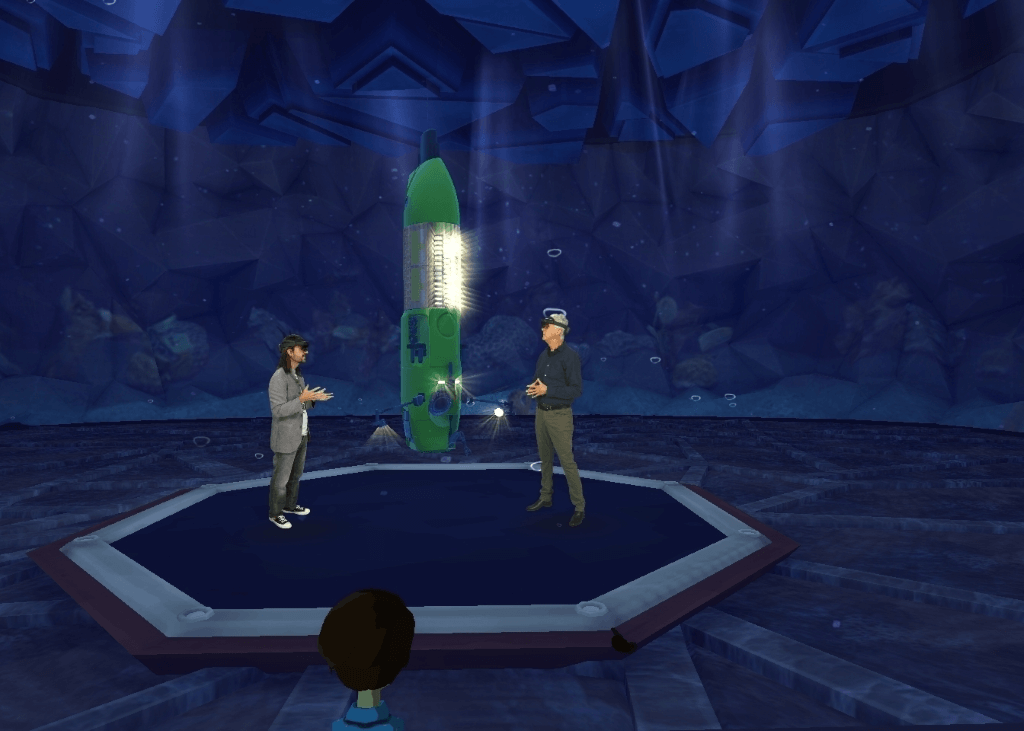Microsoft Ignite was a three-day conference that took place virtually on YouTube, Microsoft.com, and in Altspace from March 2-4. The conference included hundreds of sessions, but we’re mainly here for those that particularly touched on mixed reality – which is enough.
Surprisingly, there was little at the conference directly related to HoloLens, Microsoft’s mixed reality headset. Instead, the biggest takeaways have to do with Mesh, a new collaborative XR platform that was announced during the keynote.
The Future of the Cloud, According to Satya Nadella
Microsoft Mesh will allow users to “interact holographically in natural and organic ways,” Microsoft CEO Satya Nadella said during the keynote speech. “It’s pretty mind-boggling, but that’s the world that we’re building.”

Nadella described Mesh by inviting users to “think about what XBox Live did for gaming.” In case there are younger readers in the audience, XBox Live introduced customizable avatars along with many of the other elements that are currently taken for granted in online gaming today.
For the most part, Nadella’s portion of the keynote was about the future of cloud computing, of which Mesh is a part. This future will consist of 5 key elements that Nadella identified as:
- Ubiquitous, decentralized computing,
- Sovereign data and ambient intelligence,
- Empowered creators and communities.
- Expanded economic opportunity for the global workforce, and
- Trust by design.
“The past year has brought the most significant changes to our society and economy in modern history,” said Nadella. “As the world recovers, it will require much more from technology.”
A Hologram of Alex Kipman Introduces Mesh in Altspace
Nadella’s portion of the keynote, even in Altspace, was on a 2D display presented in an auditorium setting and watched in immersive space similar to a broadcast in a physical movie theater. Alex Kipman, Technical Fellow in artificial intelligence and mixed reality, appeared as a 3D hologram in the same auditorium to introduce Mesh.
“A dream you dream alone is just a dream. A dream we dream together is called reality,” said Kipman, who had invited attendees to visit in MR via tweet the previous week. “We tend to think of reality and dreams as separate. But, are they really?”

As he spoke, the space turned into an ocean scene as members of the audience were able to select virtual fish that swam about in the space, and aquatic scenery sprouted out of the ground. Oceanographers, including James Cameron, spoke in the keynote to talk about how they use Microsoft Mixed Reality and how they look forward to using Mesh.
Niantic CEO John Hanke Shows a Potential Future of Gaming
Those experts spoke to the nature of most of Microsoft’s projects, including HoloLens, being primarily high-end enterprise products and experiences. Arguably, Teams has been a principal exception to this and the platform serves as a logical bridge between Microsoft’s social experiences and their mixed reality hardware. But, it wasn’t the only bridge explored at Ignite.
One of the other speakers to holographically join Kipman on the Keynote stage was Niantic CEO, John Hanke. Hanke dropped one of the most talked-about moments at Ignite when he debuted early images from a HoloLens-enabled version of Pokèmon Go.

“We imagine a real world filled with adventures, helpful information, and of course, lots of friends,” said Hanke. “AR that’s grounded in the real world and aware of us and our environments is the starting point.”
Tags on the video made it clear that this project is early in production, and the video itself seemed heavily produced and scripted suggesting that any actual HoloLens (or Mesh)-enabled version of Pokèmon Go to actually materialize won’t be here any time soon; however, it gets us thinking.
It may even get us hopeful for more consumer-oriented mixed reality hardware and content from Microsoft like some of the earliest Hololens contents and announcements alluded to.
The Cross-Platform, Code-Optional Future
A social mixed reality platform sounds exciting, but only if it’s accessible. As we’ve said, HoloLens is great, but it isn’t exactly ubiquitous. Mesh wouldn’t be exciting if it only worked on HoloLens. However, Kipman’s keynote said that the experience would, like Teams, be essentially hardware-agnostic allowing users to “connect from any device on any platform.”
Kipman specifically mentioned HoloLens and Oculus, but also included Microsoft’s mixed reality interface and smartphones. A later session dedicated to Mesh explained that expanding cross-platform compatibility will be enabled by different content creation methods.
A demo created a no-code experience in Unity with drag-and-drop assets from OneDrive, but experiences can also be made with C++ and C#. The platform will also allow users to switch between on-device computing and on-cloud rendering.
What Even IS Mixed Reality?
One of the most exciting elements of the Mesh announcement and the keynote was that it transcended how most of us (certainly myself) think about mixed reality. This term usually means interactive virtual elements in the view of the physical world. However, using Microsoft holography, Mesh introduced physical people into the virtual world of Altspace.
If you missed Ignite as it happened live, check out the YouTube channel for recorded live streams of the event, as well as videos from past year’s events.




